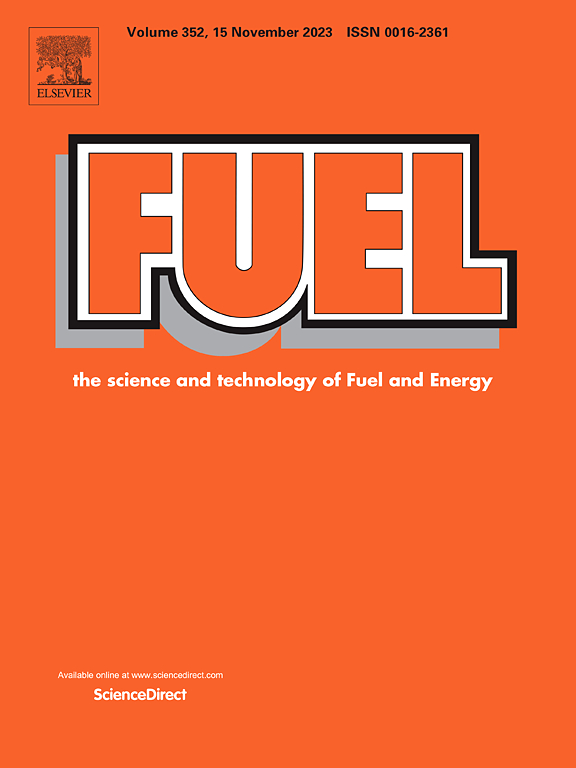Effect of ageing on ammonium perchlorate with activated copper chromite as a burn-rate modifier
IF 6.7
1区 工程技术
Q2 ENERGY & FUELS
引用次数: 0
Abstract
Ammonium perchlorate (AP) is a predominantly used oxidiser in composite solid propellants, with its burning and decomposition characteristics heavily influenced by catalyst type and concentration. This study investigates the ageing of AP with low-concentration Activated Copper Chromite (ACR) as a catalyst. AP pellets containing 0.4 % ACR, representative of typical industrial class propellant compositions, underwent accelerated cyclic ageing equivalent to four years of natural ageing. Subsequently, aged ACR was extracted and added into fresh AP and pelletized. The resulting pellets are characterised using burn rate tests, TGA, and DTA analyses. Results indicate a 12.3 % average decrease in burn rates upon ageing, alongside deteriorated decomposition characteristics compared to AP with un-aged ACR. The decomposition characteristics of AP with aged ACR are found to be shifting toward the pure AP decomposition characteristics. This shift indicates that the ageing process alters the decomposition properties of the AP–aged ACR mixture, causing it to behave like AP during decomposition. The activation energy of AP, AP+raw ACR and AP+aged ACR also shows similar trends in changes in activation energy proving deterioration in catalytic performance on AP. Ammonium TPD testing reveals a loss in the strength of Lewis acid sites in aged ACR, suggesting reduced efficiency. Additionally, Energy-Dispersive Spectroscopy Analysis demonstrates an increase in oxygen content in aged ACR. XRD tests show increase in copper oxide upon ageing of ACR and decrease in the percentage of copper chromium oxide. Propellants with raw and aged ACR were made and burn rates were measured. Burn rates were found to decrease in case of propellants with aged ACR. These findings underscore the importance of understanding the ageing process in AP-ACR systems and its implications for propellant performance.
求助全文
约1分钟内获得全文
求助全文
来源期刊

Fuel
工程技术-工程:化工
CiteScore
12.80
自引率
20.30%
发文量
3506
审稿时长
64 days
期刊介绍:
The exploration of energy sources remains a critical matter of study. For the past nine decades, fuel has consistently held the forefront in primary research efforts within the field of energy science. This area of investigation encompasses a wide range of subjects, with a particular emphasis on emerging concerns like environmental factors and pollution.
 求助内容:
求助内容: 应助结果提醒方式:
应助结果提醒方式:


